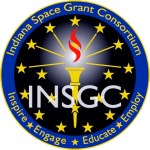NASA News Page
The NASA News page will be updated on a weekly basis. Check in on this page each week to check out the new information.
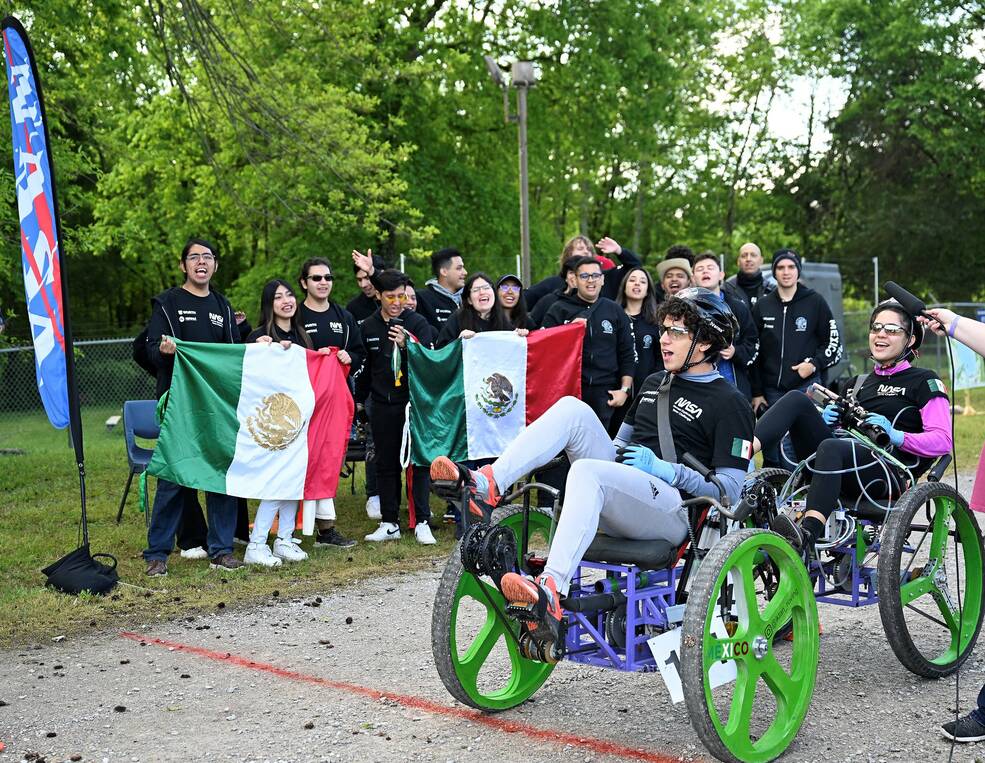
Students interested in designing, developing, building, and testing rovers for Moon and Mars exploration are invited to submit their proposals to NASA through Thursday, Sept. 21.
The complete details on how to participate in NASA’s Human Exploration Rover Challenge are available online. To learn more, challenge experts are hosting two webinars at 10 a.m. EDT, and again at 6 p.m., on Thursday, Aug. 24. The virtual sessions will outline the proposal processes, and requires pre-registration.
“Our Human Exploration Rover Challenge will focus on an immersive story based on proposed NASA-use cases for crewed and uncrewed rovers during upcoming Artemis missions, including exploring permanently shadowed regions, positioning to recharge batteries, power and data exchange with other surface assets, and storing collected samples,” said Vemitra Alexander, challenge activity lead for NASA’s Office of STEM Engagement. “Students must determine why an autonomous rover exploring the shadowed regions has gone out of contact and, if possible, attempt to repair the robotic rover.”
By participating in this challenge, NASA hopes students will develop a deeper understanding of content and enhance their communication, collaboration, inquiry, problem-solving, and flexibility skills that will benefit them throughout their academic and professional lives. Interested teams should review the handbook for proposal guidelines and new task challenges.
In October, NASA will announce which teams are invited to the U.S. Space & Rocket Center in Huntsville, Alabama, near NASA’s Marshall Space Flight Center, in April 2024 to showcase their submissions.
Celebrating its 30th anniversary, the Human Exploration Rover Challenge tasks high school, college, and university students from around the world to design, build, and test lightweight, human-powered rovers on an obstacle course simulating lunar and Martian terrain, all while completing mission-focused science tasks. Once selected, students are required to complete months of design and safety reviews mirroring the engineering design process used by NASA engineers and scientists.
This challenge provides students a chance to engage with NASA’s Artemis program, which includes putting the first woman and first person of color on the Moon. NASA and event sponsors continue to encourage students to push the limits of innovation.
The challenge is managed by NASA’s Southeast Regional Office of STEM Engagement at Marshall and is one of eight Artemis Student Challenges. NASA’s Office of STEM Engagement uses challenges and competitions to further the agency’s goal of encouraging students to pursue degrees and careers in science, technology, engineering, and mathematics.
NASA Selects Axiom Space for Another Private Space Mission in 2024
August 3rd, 2023
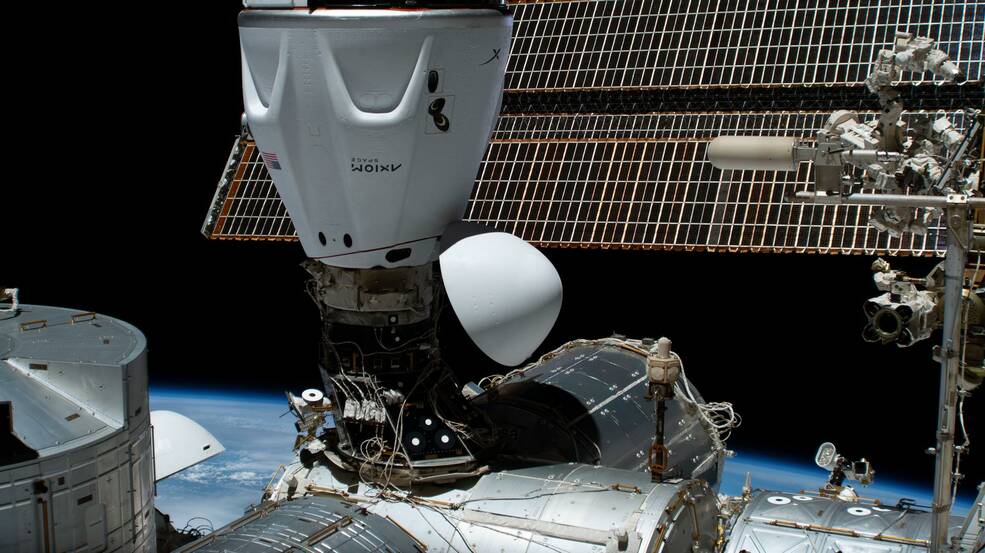
NASA and Axiom Space have signed an order for the fourth private astronaut mission to the International Space Station, targeted to launch no earlier than August 2024 from the agency’s Kennedy Space Center in Florida.
“I am pleased to see another milestone in our efforts to transition low Earth orbit from primarily a government-sponsored activity to one where NASA is one of many customers,” said Phil McAlister, director of commercial space at NASA Headquarters in Washington. “NASA has been directed to develop commercial platforms to sustain a continuous United States presence in low Earth orbit and to transition beyond International Space Station operations. These private astronaut missions are helping to pave the way for that transition.”
Axiom Mission 4 (Ax-4) is expected to spend up to 14 days docked to the space station. A specific launch date depends on overall spacecraft traffic to the orbital outpost, and other planning constraints. NASA and Axiom Space mission planners will coordinate in-orbit activities for the private astronauts as they work with station crew members and flight controllers on the ground.
"Our Axiom Space team is looking forward to a fourth mission to the International Space Station,” said Michael Suffredini, CEO and president of Axiom Space. “Each mission allows us to build on the foundation we have set for the world's first commercial space station, Axiom Station, preparing our teams and orbital platform to succeed the International Space Station operations in low Earth orbit. These missions are instrumental in expanding commercial space activities and access to space for individuals and nations around the world, as well as developing the knowledge and experience needed to normalize living and working in microgravity.”
Axiom Space will submit four proposed crew members for the Ax-4 mission to NASA and its international partners for review. If approved, the prime crew members for the mission will be confirmed.
The Ax-4 crew members will train with NASA, international partners, and SpaceX for their flight. Axiom Space has contracted SpaceX as launch provider for transportation to and from the space station, and to familiarize the private astronauts with systems, procedures, and emergency preparedness for the Dragon spacecraft.
Axiom Space is obtaining NASA services via both a mission-specific order and a reimbursable Space Act Agreement.
Through the mission-specific order, Axiom Space is obtaining from NASA crew supplies, cargo delivery to space, storage, and in-orbit resources for daily use. The order also accommodates up to seven contingency days aboard the space station. This mission is subject to NASA’s pricing policy for the services that are above space station baseline capabilities.
The order also identifies capabilities NASA may obtain from Axiom Space, including the return of scientific samples that must be kept cold and other cargo, and the capability to use the private astronaut mission commander’s time to complete NASA science or perform tasks for the agency.
Through Space Act Agreements, Axiom Space will reimburse NASA for services to enable the mission, such as training for crew members and use of facilities at NASA’s Johnson Space Center in Houston and the agency’s Kennedy Space Center in Florida. In addition, SpaceX has a reimbursable agreements with NASA Kennedy for launch services.
NASA announced its selection of Axiom Space for the third private astronaut mission in March. NASA and its international partners are reviewing the proposed crew members now, and an announcement is expected later this year. The mission is now targeted to launch no earlier than January 2024.
NASA made the selection for the third and fourth private astronaut missions from proposals received in response to its September 2022 NASA Research Announcement and evaluated the mission proposals based on the provider’s ability to execute a mission successfully, NASA’s ability to support the proposed mission, and the mission’s contribution to the agency’s goal of low Earth orbit commercialization.
For more than 22 years, NASA has supported a continuous U.S. human presence in low Earth orbit. The agency's goal is a low Earth orbit marketplace where NASA is one of many customers, and the private sector leads the way. This strategy will provide services the government needs at a lower cost, enabling the agency to focus on its Artemis missions to the Moon and eventually Mars while continuing to use low Earth orbit as a training and proving ground for those deep space missions.
NASA to Discuss Science on Next Northrop Grumman Space Station Mission
July 11th, 2023
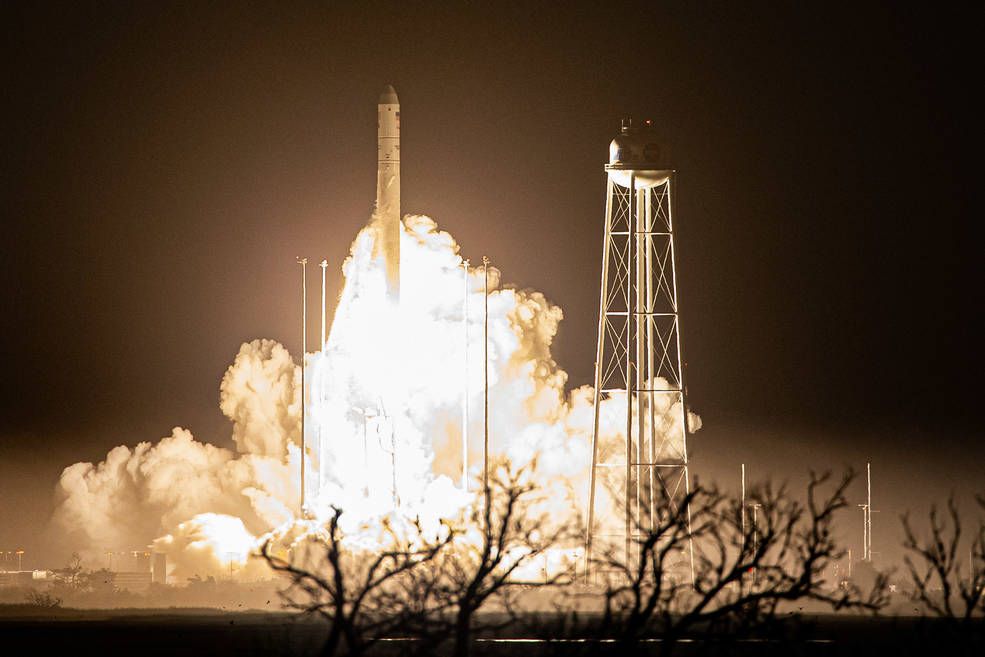
NASA will host a media teleconference at 10 a.m. EDT on Tuesday, July 18, to discuss the next science investigations bound for the International Space Station aboard Northrop Grumman’s Cygnus spacecraft on the company’s 19th commercial resupply mission for NASA.
Audio of the media call will stream live at:
NASA and Northrop Grumman are targeting launch no earlier than 8:30 p.m. on Tuesday, Aug. 1. The Cygnus spacecraft, carried atop the company’s Antares rocket, will launch from the Mid-Atlantic Regional Spaceport at NASA’s Wallops Flight Facility in Virginia. The mission will carry scientific research, crew supplies, and hardware to the space station to support its Expedition 69 crew.
Cygnus is scheduled to rendezvous with the station on Friday, Aug. 4, for robotic installation to the Unity module’s Earth-facing port.
To participate in the call, media must RSVP at least two hours prior to the start of the event to Joshua Finch at joshua.a.finch@nasa.gov. The public can submit questions on social media using #AskNASA. A copy of the agency’s media policy is online.
Heidi Parris, associate program scientist for the International Space Station Program at NASA’s Johnson Space Center in Houston, will provide an overview of the research launching aboard the Cygnus spacecraft.
In addition to Parris, teleconference participants include:
- Dr. David Urban, branch chief, and principal investigator for Saffire-VI, NASA’s Glenn Research Center in Cleveland
- Katherine Toon, integration manager for exploration environmental control and life support, International Space Station Program at NASA Johnson, who will speak on Exploration Potable Water Dispenser
- Dr. Shane Hegarty, chief scientific officer and co-founder of Axonis Therapeutics, Inc., and principal investigator for Neuronix
- Dr. Lasse Clausen, professor of Plasma and Space Physics, University of Oslo, Norway, who will speak on Multi-Needle Langmuir Probe
- Tsutomu Yamanaka, principal investigator IHI Corporation, and principal investigator for I-Space Essay
Cargo resupply from U.S. companies ensures a national capability to deliver critical hardware and science research to the space station, significantly increasing the ability of NASA to conduct new investigations at the orbital outpost. Other U.S. government agencies, private industry, and academic and research institutions can also conduct microgravity research through our partnership with the International Space Station National Laboratory.
The orbiting microgravity laboratory advances scientific knowledge in Earth, space, physical, and biological sciences. Such research benefits people on Earth and lays the groundwork for future human exploration deeper into the solar system, including to the Moon through the agency’s Artemis missions.
New York Students to Hear from NASA Astronaut Aboard Space Station
February 7th, 2023

tudents from Dr. Martin Luther King Jr. School No. 9 in Rochester, New York, will have an opportunity this week to hear from a NASA astronaut aboard the International Space Station.
The space-to-Earth call will air live at 9:55 a.m. EST Friday, Feb.10, on NASA Television, the NASA app, and the agency’s website.
NASA astronaut Josh Cassada, who earned a doctorate in experimental high-energy physics from the University of Rochester, will answer prerecorded questions from elementary school students. The event, hosted by the Rochester Museum & Science Center, and its Strasenburgh Planetarium and Cumming Nature Center, will offer students an opportunity to learn first-hand what it is like to live and work in space. U.S. Rep. Joe Morelle will deliver opening remarks.
Media interested in covering the event need to RSVP no later than 5 p.m. on Thursday, Feb. 9, to Lyndsay Houghton at: lhoughton@rmsc.org or 585-503-4457.
For more than 22 years, astronauts have continuously lived and worked aboard the space station, testing technologies, performing science, and developing the skills needed to explore farther from Earth. Astronauts living in space aboard the orbiting laboratory communicate with NASA’s Mission Control Center in Houston 24 hours a day through the Near Space Network Tracking and Data Relay Satellites (TDRS).
As part of Artemis, NASA will send astronauts to the Moon to prepare for future human exploration of Mars. Inspiring the next generation of explorers – the Artemis Generation – ensures America will continue to lead in space exploration and discovery.
NASA Invites Media to SpaceX’s 27th Resupply Launch to Space Station
February 6th, 2023
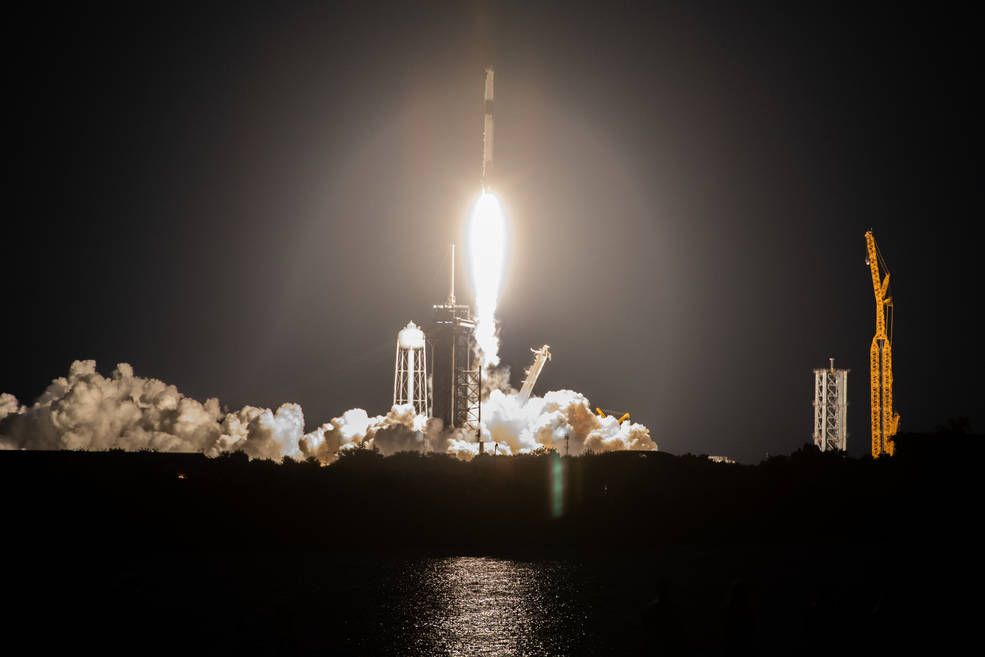
Media accreditation is open for SpaceX’s 27th commercial resupply mission for NASA to the International Space Station. Liftoff of the SpaceX Dragon cargo spacecraft on a Falcon 9 rocket is targeted for no earlier than Friday, March 10, from Launch Complex 39A at NASA’s Kennedy Space Center in Florida.
SpaceX’s Dragon will deliver new science investigations, supplies, and equipment for the international crew, including the final two experiments comprising the National Institutes for Health and International Space Station National Laboratory’s Tissue Chips in Space initiative. Both studies, Cardinal Heart 2.0 and Engineered Heart Tissues-2, use small devices containing living cells that mimic functions of human tissues and organs to advance the development of treatments for cardiac dysfunction.
Media prelaunch and launch activities will take place at Kennedy. Attendance for this launch is open to U.S. citizens. U.S. media must apply by 11:59 p.m. EST Wednesday, Feb. 22. Media wishing to take part in person must apply for credentials at:
Credentialed media will receive a confirmation email upon approval. For questions about accreditation, or to request special logistical requests, please email ksc-media-accreditat@mail.nasa.gov. For other questions, please contact Kennedy’s newsroom at: 321-867-2468.
Para obtener información sobre cobertura en español en el Centro Espacial Kennedy o si desea solicitar entrevistas en español, comuníquese con Antonia Jaramillo at: antonia.jaramillobotero@nasa.gov or 321-501-8425.
Other studies launching include, NASA’s HUNCH Ball Clamp Monopod, a student manufactured project that can make filming in space easier, and the Japan Aerospace Exploration Agency’s Tanpopo-5 investigation, which studies microbes to learn more about the possibility of the survival and growth of organisms in space and on extraterrestrial planets, such as Mars.
Cargo resupply by U.S. companies significantly increases NASA's ability to conduct more investigations aboard the orbiting laboratory. Those investigations lead to new technologies, medical treatments, and products that improve life on Earth. Other U.S. government agencies, private industry, and academic and research institutions can also conduct microgravity research through NASA’s partnership with the International Space Station National Laboratory.
Humans have occupied the space station continuously since November 2000. In that time, 263 people and a variety of international and commercial spacecraft have visited the orbital outpost. It remains the springboard to NASA's next steps in exploration, including future missions to the Moon under Artemis, and ultimately, human exploration of Mars.
NASA to Air Live Coverage of Spacewalk for Power System Upgrades
January 30th, 2023

Two astronauts aboard the International Space Station will conduct a spacewalk Thursday, Feb. 2, to continue the installation of hardware for future power system upgrades. The spacewalk is scheduled to begin at 8:15 a.m. EST and last about six and a half hours.
The agency will provide live coverage of the spacewalk beginning at 6:45 a.m., on NASA Television, the NASA app, and the agency’s website.
On Feb. 2, NASA astronaut Nicole Mann and Japan Aerospace Exploration Agency (JAXA) astronaut Koichi Wakata will exit the station’s Quest airlock to complete installation of a mounting platform on the 1A power channel as part of a planned solar array augmentation on the starboard side of the station’s truss.
The duo will complete the installation of the mounting platform that was started during a spacewalk on Jan. 20, relocate and install an articulating portable foot restraint from the P6 truss for future spacewalk tasks, and if time permits, complete cable routing on the 1B power channel.
The installation is part of a series of spacewalks to augment the station’s power channels with new International Space Station Roll-Out Solar Arrays (iROSAs). Four iROSAs have been installed so far, and two additional arrays will be mounted to the installed platforms during future spacewalks following their arrival this year on NASA’s SpaceX 28th commercial resupply services mission.
Mann will serve as extravehicular crew member 1 and will wear a suit with red stripes. Wakata will serve as extravehicular crew member 2 and will wear an unmarked suit. The spacewalk will be the second for both Mann and Wakata.
NASA Says 2022 Fifth Warmest Year on Record, Warming Trend Continues
January 11th, 2023
Earth's average surface temperature in 2022 tied with 2015 as the fifth warmest on record, according to an analysis by NASA. Continuing the planet's long-term warming trend, global temperatures in 2022 were 1.6 degrees Fahrenheit (0.89 degrees Celsius) above the average for NASA's baseline period (1951-1980), scientists from NASA's Goddard Institute for Space Studies (GISS) in New York reported.
“This warming trend is alarming,” said NASA Administrator Bill Nelson. “Our warming climate is already making a mark: Forest fires are intensifying; hurricanes are getting stronger; droughts are wreaking havoc and sea levels are rising. NASA is deepening our commitment to do our part in addressing climate change. Our Earth System Observatory will provide state-of-the-art data to support our climate modeling, analysis and predictions to help humanity confront our planet’s changing climate.”
The past nine years have been the warmest years since modern recordkeeping began in 1880. This means Earth in 2022 was about 2 degrees Fahrenheit (or about 1.11 degrees Celsius) warmer than the late 19th century average.
“The reason for the warming trend is that human activities continue to pump enormous amounts of greenhouse gases into the atmosphere, and the long-term planetary impacts will also continue,” said Gavin Schmidt, director of GISS, NASA's leading center for climate modeling.
Human-driven greenhouse gas emissions have rebounded following a short-lived dip in 2020 due to the COVID-19 pandemic. Recently, NASA scientists, as well as international scientists, determined carbon dioxide emissions were the highest on record in 2022. NASA also identified some super-emitters of methane – another powerful greenhouse gas – using the Earth Surface Mineral Dust Source Investigation instrument that launched to the International Space Station last year.
The Arctic region continues to experience the strongest warming trends – close to four times the global average – according to GISS research presented at the 2022 annual meeting of the American Geophysical Union, as well as a separate study.
Communities around the world are experiencing impacts scientists see as connected to the warming atmosphere and ocean. Climate change has intensified rainfall and tropical storms, deepened the severity of droughts, and increased the impact of storm surges. Last year brought torrential monsoon rains that devastated Pakistan and a persistent megadrought in the U.S. Southwest. In September, Hurricane Ian became one of the strongest and costliest hurricanes to strike the continental U.S.
Tracking Our Changing Planet
NASA’s global temperature analysis is drawn from data collected by weather stations and Antarctic research stations, as well as instruments mounted on ships and ocean buoys. NASA scientists analyze these measurements to account for uncertainties in the data and to maintain consistent methods for calculating global average surface temperature differences for every year. These ground-based measurements of surface temperature are consistent with satellite data collected since 2002 by the Atmospheric Infrared Sounder on NASA's Aqua satellite and with other estimates.
NASA uses the period from 1951-1980 as a baseline to understand how global temperatures change over time. That baseline includes climate patterns such as La Niña and El Niño, as well as unusually hot or cold years due to other factors, ensuring it encompasses natural variations in Earth's temperature.
Many factors can affect the average temperature in any given year. For example, 2022 was one of the warmest on record despite a third consecutive year of La Niña conditions in the tropical Pacific Ocean. NASA scientists estimate that La Niña’s cooling influence may have lowered global temperatures slightly (about 0.11 degrees Fahrenheit or 0.06 degrees Celsius) from what the average would have been under more typical ocean conditions.
A separate, independent analysis by the National Oceanic and Atmospheric Administration (NOAA) concluded that the global surface temperature for 2022 was the sixth highest since 1880. NOAA scientists use much of the same raw temperature data in their analysis and have a different baseline period (1901-2000) and methodology. Although rankings for specific years can differ slightly between the records, they are in broad agreement and both reflect ongoing long-term warming.
NASA's full dataset of global surface temperatures through 2022, as well as full details with code of how NASA scientists conducted the analysis, are publicly available from GISS.
GISS is a NASA laboratory managed by the Earth Sciences Division of the agency's Goddard Space Flight Center in Greenbelt, Maryland. The laboratory is affiliated with Columbia University's Earth Institute and School of Engineering and Applied Science in New York.
NASA Sets Coverage for Next SpaceX Resupply Launch to Space Station
November 15th, 2022

NASA and SpaceX are targeting 4:19 p.m. EST Monday, Nov. 21, to launch the company’s 26th commercial resupply mission to the International Space Station.
Liftoff will be from Launch Complex 39A at the agency’s Kennedy Space Center in Florida. SpaceX’s Dragon cargo spacecraft will deliver new science investigations, supplies, and equipment for the international crew.
Live launch coverage will air on NASA Television, the NASA app, and the agency’s website, with prelaunch events starting Friday, Nov. 18. Follow all events at:
The Dragon spacecraft will deliver a variety of NASA investigations, including the next pair of International Space Station Roll Out Solar Arrays (iROSAs), which will augment power to the orbiting laboratory. The spacecraft also will carry a study to grow dwarf tomatoes to help create a continuous fresh-food production system in space, as well as an experiment that tests an on-demand method to create specific quantities of key nutrients.
Arrival to the station is scheduled for 9:43 a.m. ET on Wednesday, Nov. 23. The Dragon spacecraft will dock autonomously to the forward-facing port of the station’s Harmony module.
The spacecraft is expected to spend about a month attached to the orbiting outpost before it returns to Earth with research and return cargo, splashing down off the coast of Florida.
The deadline has passed for media accreditation for in-person coverage of this launch. The agency’s media accreditation policy is available online. More information about media accreditation is available by emailing: ksc-media-accreditat@mail.nasa.gov.
Full coverage of this mission is as follows (all times Eastern).
Friday, Nov. 18
3 p.m. – Prelaunch media teleconference (no earlier than one hour after completion of the Launch Readiness Review) with the following participants:
- A representative from NASA’s International Space Station Program
- Kirt Costello, chief scientist, NASA’s International Space Station Program Research Office
- Sarah Walker, director, Dragon Mission Management, SpaceX
- Arlena Moses, launch weather officer, Cape Canaveral Space Force Station’s 45th Weather Squadron
Audio of the teleconference will stream live on the agency’s website:
Media may ask questions via phone only. For the dial-in number and passcode, please contact the Kennedy newsroom no later than 12 p.m. on Friday, Nov. 18 at: ksc-newsroom@mail.nasa.gov.
Monday, Nov. 21
3:45 p.m. – NASA TV launch coverage begins
4:19 p.m. – Launch
Wednesday, Nov. 23
8:30 a.m. – NASA TV coverage begins for Dragon docking to space station
9:43 a.m. – Docking
Coverage is subject to change based on real-time operational activities. Follow the International Space Station blog for updates.
NASA TV launch coverage
Live coverage of the launch on NASA TV will begin at 3:45 p.m. Monday, Nov. 21. For downlink information, schedules, and links to streaming video, visit:
Audio only of the news conferences and launch coverage will be carried on the NASA “V” circuits, which may be accessed by dialing 321-867-1220, -1240, or -7135. On launch day, the full mission broadcast can be heard on -1220 and -1240, while the countdown net only can be heard on -7135 beginning approximately one hour before the mission broadcast begins.
On launch day, a “tech feed” of the launch without NASA TV commentary will be carried on the NASA TV media channel.
NASA website launch coverage
Launch day coverage of the mission will be available on the NASA website. Coverage will include live streaming and blog updates beginning no earlier than 3:45 p.m. Monday, Nov. 21, as the countdown milestones occur. On-demand streaming video and photos of the launch will be available shortly after liftoff. For questions about countdown coverage, contact the Kennedy newsroom at 321-867-2468. Follow countdown coverage on our launch blog for updates.
Attend launch virtually
Members of the public can register to attend this launch virtually. Registrants will receive mission updates and activities by email. NASA’s virtual guest program for this mission also includes curated launch resources, notifications about related opportunities, and a virtual guest passport stamp following a successful launch.
NASA Awards Contracts for Acquisition of Liquid Hydrogen
November 14th, 2022
NASA has awarded contracts to Air Products and Chemicals Inc. of Allentown, Pennsylvania, and Linde Inc. of Danbury, Connecticut, to supply up to approximately 15 million pounds of liquid hydrogen for use at facilities across the agency.
The indefinite delivery requirements contracts include multiple firm-fixed price delivery orders with maximum values of approximately $57.3 million for Air Products and Chemicals and approximately $29.1 million for Linde. Each contract begins Dec. 1 and consists of a two-year base period followed by an option period that, if exercised, would extend the contract to Nov. 30, 2025.
Under these contracts, Air Products and Chemicals will supply up to about 13.1 million pounds of liquid hydrogen to NASA’s Marshall Space Flight Center in Huntsville, Alabama, and Stennis Space Center in Bay St. Louis, Mississippi, while Linde will deliver up to approximately 1.89 million pounds of the commodity to the agency’s Glenn Research Center in Cleveland and Armstrong Test Facility in Sandusky, Ohio, as well as NASA’s Kennedy Space Center (including Cape Canaveral Space Force Station) in Florida.
NASA uses liquid hydrogen, combined with liquid oxygen, as fuel in cryogenic rocket engines, and the commodity’s unique properties support the development of aeronautics.
NASA, USAID Partnership Strengthens Global Development
November 4th, 2022
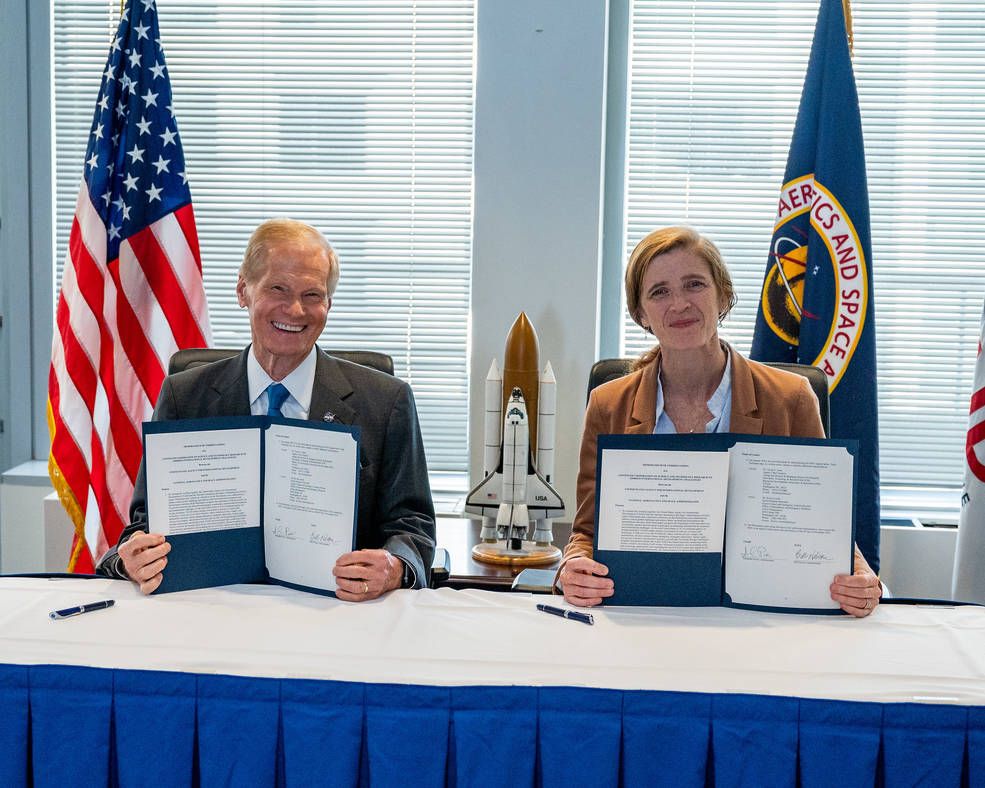
NASA and the U.S. Agency for International Development (USAID) signed an agreement Friday strengthening the collaboration between the two agencies, including efforts that advance the federal response to climate change.
Specifically, the memorandum of understanding (MOU) enhances and expands the agencies’ longstanding partnership that promotes science and technology solutions to address international development challenges in areas such as global health, climate change, food security, disaster mitigation and response, biodiversity conservation, environmental management, and enable open science and data infrastructure for sustainable development.
“NASA’s partnership with USAID is empowering people around the world. Together, we are providing scientists, leaders, and citizens across the globe with access to NASA’s one-of-a-kind expertise and data and apply it to real-world problems on the ground,” said NASA Administrator Bill Nelson. “Today’s signing continues NASA and USAID’s work to monitor air quality, help governments adapt in the face of growing threats caused by extreme weather, strengthen food security, decrease poverty, and more. This is just another powerful example of the Biden-Harris Administration’s commitment to science and leadership – from the Amazon, to the Sahara, the Himalayas, and everywhere in between.”
This MOU also extends the collaboration between NASA and USAID into other NASA programs, most notably with the NASA Disasters program area within the agency’s Earth Science Applied Sciences Program. In addition to working to prepare communities by increasing resilience to future disasters, the NASA Disasters program area provides expertise and assistance before, during, and after disasters in the form of subject matter expertise, imagery, data, tools, maps, and trusted partnerships. In addition, Disasters program personnel collaborate with USAID, SERVIR, and other domestic and international local and federal governmental and non-governmental groups to share NASA’s capabilities.
The agencies also have agreed to explore how efforts promoting science, technology, engineering, and mathematics education can be advanced through joint support of programs such as Global Learning and Observations to Benefit the Environment (GLOBE). GLOBE is a worldwide primary and secondary school-based science and education program funded by NASA and other U.S. agencies.
In addition to highlighting the important relationship and ongoing work between NASA and USAID – and the societal benefits that come from space exploration and research – the MOU reaffirms the Biden-Harris Administration priorities relating to the climate crisis and advocating for educational programs that increase diversity, equity, inclusion, and accessibility.
Prior to this latest agreement, NASA and USAID have longstanding collaborations through SERVIR and the Famine Early Warning Systems Network. SERVIR is a joint initiative aimed at co-developing innovative solutions and applications of NASA Earth science data to improve resilience and sustainable resource management at local, national, and regional scales. SERVIR is making an impact in more than 50 countries by working with and through regional technical organizations around the globe. The early warning network provides decision-makers and planners with actionable information to address food insecurity. Both collaborations have proven the value of using NASA’s latest satellite data and other information to not only impact local users’ decisions, but also help USAID evaluate the impact of their investments from a broader perspective.
NASA TV to Air Crew Activities as Astronauts Prepare, Return to Earth
October 10th, 2022
NASA will provide live coverage of the upcoming return activities for the agency’s SpaceX Crew-4 mission to the International Space Station.
NASA and SpaceX are targeting 4:50 p.m. EDT Friday, Oct. 14, for the splashdown and conclusion of the Crew-4 flight, wrapping up a nearly six-month science mission for NASA astronauts Bob Hines, Kjell Lindgren, and Jessica Watkins, as well as ESA (European Space Agency) astronaut Samantha Cristoforetti. Their SpaceX Dragon spacecraft is scheduled to undock from the space station no earlier than 11:35 a.m. Friday, Oct. 14, to begin the journey home.
Mission teams continue to monitor a cold front passing through Florida on Thursday, Oct. 13, bringing high winds and rainy weather near the splashdown zones off the Atlantic and Gulf coasts. Current weather predictions are showing greater forecast certainty Friday due to a high-pressure system behind the cold front, which is expected to bring more favorable conditions for splashdown and recovery. NASA and SpaceX will continue to monitor splashdown and recovery conditions with another weather review around eight hours prior to undocking. Teams also will review multiple options for undocking opportunities Friday, Oct. 14, and Saturday, Oct. 15.
Crew-4’s Dragon undocking depends on a variety of factors, including spacecraft readiness, recovery team readiness, weather, sea states, and other factors. Dragon Freedom remains healthy while currently docked to the space station.
Dragon’s hatch closing, undocking, and splashdown coverage will air live on NASA Television, the NASA app, and the agency’s website. NASA also will host an audio only post-splashdown news teleconference. Follow all live events at:
NASA’s SpaceX Crew-4 return coverage is as follows (all times Eastern):
Friday, Oct. 14
9:30 a.m. – Hatch closure coverage begins for 9:55 a.m. hatch closing
11:15 a.m. – Undocking coverage begins for 11:35 a.m. undocking with a Friday splashdown
4:50 p.m. (approximately) – Splashdown off the coast of Florida
6:30 p.m. – Return to Earth media teleconference call from NASA’s Johnson Space Center in Houston with:
- Steve Stich, manager, Commercial Crew Program, NASA’s Kennedy Space Center in Florida
- Joel Montalbano, manager, International Space Station, NASA’s Johnson Space Center in Houston
- Sarah Walker, director, Dragon Mission Management, SpaceX
Media may ask questions via phone only. For the dial-in number and passcode, media must contact the NASA Johnson newsroom at: jsccommu@mail.nasa.gov or 281-483-5111 by 5 p.m. Friday, Oct. 14.
NASA, USGS Map Minerals to Understand Earth Makeup, Climate Change
September 30th, 2022
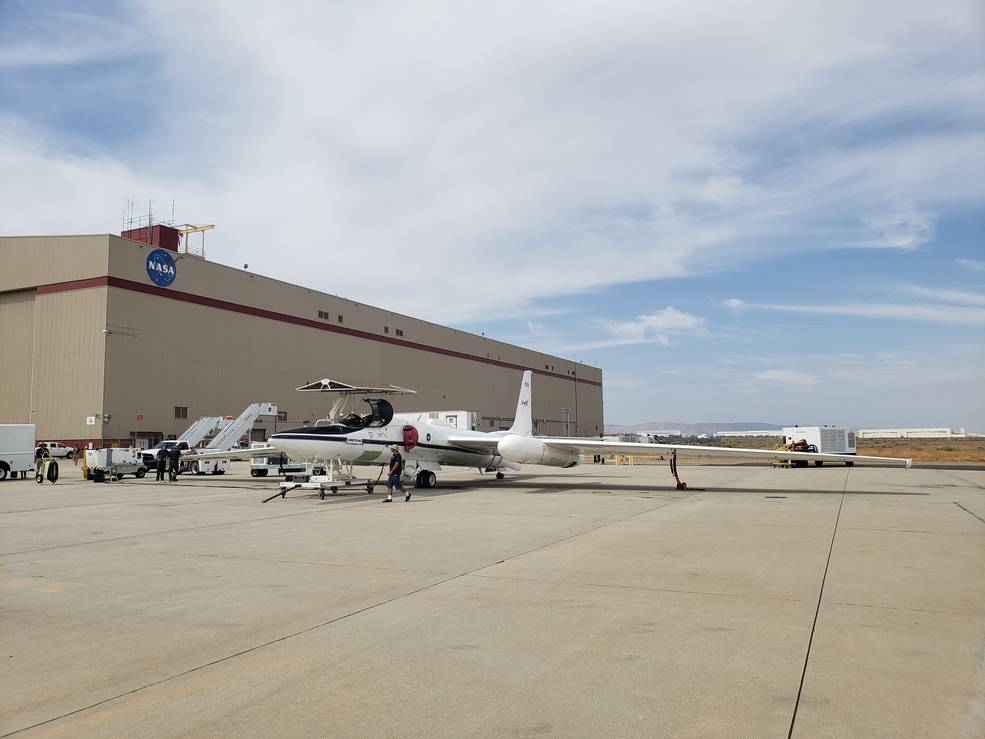
NASA and the U.S. Geological Survey (USGS) will map portions of the southwest United States for critical minerals using advanced airborne imaging.
Hyperspectral data from hundreds of wavelengths of reflected light can provide new information about Earth’s surface and atmosphere to help scientists understand Earth’s geology and biology, as well as the effects of climate change.
The research project, called the Geological Earth Mapping Experiment (GEMx), will use NASA’s Airborne Visible/Infrared Imaging Spectrometer (AVIRIS) and Hyperspectral Thermal Emission Spectrometer (HyTES) instruments flown on NASA’s ER-2 and Gulfstream V aircraft to collect the measurements over the country’s arid and semi-arid regions, including parts of California, Nevada, Arizona, and New Mexico.
“This exciting new project is just one example of the Biden-Harris Administration’s commitment to a clean energy future,” said NASA Administrator Bill Nelson. “NASA has a long history of Earth observation that shows us how the planet is responding to climate change. This project builds on our 60-year legacy, and can show us where to look for the resources that support our transition to a clean energy economy. With our partners at USGS, NASA has led the way in developing these Earth observation systems to gather information to measure and monitor the environment and climate change.”
These new observations record the spectroscopic fingerprints of surface minerals across hundreds of wavelength bands. In other words, these are measurements not only of visible light our eyes can see but also of wavelengths of light beyond the visible into the infrared. The data can be used to identify the presence of a wide variety of minerals including primary rock-forming minerals as well as mineral weathering or alteration.
This project will complement data from NASA’s newest instrument on the International Space Station, the Earth Surface Mineral Dust Source Investigation (EMIT). EMIT is focused on mapping the mineral dust source composition of Earth’s arid regions to better understand how mineral dust affects heating and cooling of the planet. The instrument also makes spectroscopic measurements of the hundreds of wavelengths of light reflected from materials on Earth. The mission provided its first view of Earth on July 27 and is expected to become fully operational next month.
The $16 million GEMx research project will last five years and is funded by the USGS Earth Mapping Resources Initiative, through investments from the Bipartisan Infrastructure Law. The initiative will capitalize on both the technology developed by NASA for spectroscopic imaging as well as the expertise in analyzing the datasets and extracting critical mineral information from them. Beyond providing additional detail over the mineral maps made by EMIT, GEMx will provide NASA with critical high-resolution data at regional scales to support development of the Surface Biology and Geology mission, part of NASA’s new Earth System Observatory. The Surface Biology and Geology mission will answer questions about the fluxes of carbon, water, nutrients, and energy within and between ecosystems and the atmosphere, the ocean and Earth.
"This exciting scientific effort is made possible through the President Biden’s Bipartisan Infrastructure Law investments and will enable NASA and the USGS to leverage our unique capabilities toward a common goal,” said USGS Director David Applegate. “The data we’re collecting will be foundational for not only critical minerals research but also for a wide range of other scientific applications, from natural hazards mitigation to ecosystem restoration.”
In 1979, NASA started developing spectral imaging systems at the Jet Propulsion Laboratory. The first system, the Airborne Imaging Spectrometer, led to the development of AVIRIS. NASA and USGS have a long history of collaborating on collecting and analyzing spectroscopic data, including the 17-year Earth Observing-1 mission, which carried the first Earth orbiting instrument spanning the AVIRIS spectral range, Hyperion. This type of spectroscopic imaging has a long history of use in mineral research. These data are also useful for understanding a variety of other Earth science, ecological, and biological issues including geological acid mine drainage, debris flows, agriculture, wildfires, and biodiversity.
NASA Updates Crew Assignments for First Starliner Crew Rotation Flight
September 30th, 2022

NASA has added two astronauts to the agency’s Boeing Starliner-1 launch to the International Space Station, the spacecraft’s first mission following completion of its flight tests and certification.
Astronauts Scott Tingle and Mike Fincke of NASA will serve as the CST-100 Starliner spacecraft commander and pilot, respectively, for the mission. Both astronauts have previously flown as crew members aboard the space station.
NASA astronaut Jeanette Epps remains assigned as a mission specialist on Starliner-1. Epps also continues cross-training on the Dragon spacecraft to protect for other flight opportunities.
The agency’s Starliner crew rotation missions to the space station will carry four crew members at a time. Future crew assignments for Starliner-1 will be made following review and approval by the agency and its international partners.
Starliner-1 will launch following the successful completion of NASA’s Boeing Crew Flight Test (CFT), which aims to demonstrate Starliner’s ability to achieve NASA certification and safely fly regular crewed missions to space station.
Boeing is targeting launch of its first test flight with astronauts in early February 2023, pending space station program approval, rocket manifest, and confirmation by the Eastern Range. Starliner will launch aboard a United Launch Alliance Atlas V rocket from Space Launch Complex-41 at Cape Canaveral Space Force Station in Florida.
After a successful CFT mission, NASA will begin the final process of certifying the Starliner spacecraft and systems for future crewed missions to the space station as part of the agency’s Commercial Crew Program.
For more than 21 years, astronauts have continuously lived and worked aboard the space station, testing technologies, performing science, and developing the skills needed to explore farther from Earth. Regular commercial crew rotation missions enable NASA to continue the important research and technology investigations taking place aboard the station and prepare for future commercial destinations in low-Earth orbit. As part of Artemis, NASA will send astronauts to the Moon to prepare for future human exploration of Mars. Inspiring the next generation of explorers – the Artemis Generation – ensures America will continue to lead in space exploration and discovery.
Texas Students to Hear from NASA Astronauts Aboard Space Station
September 19th, 2022
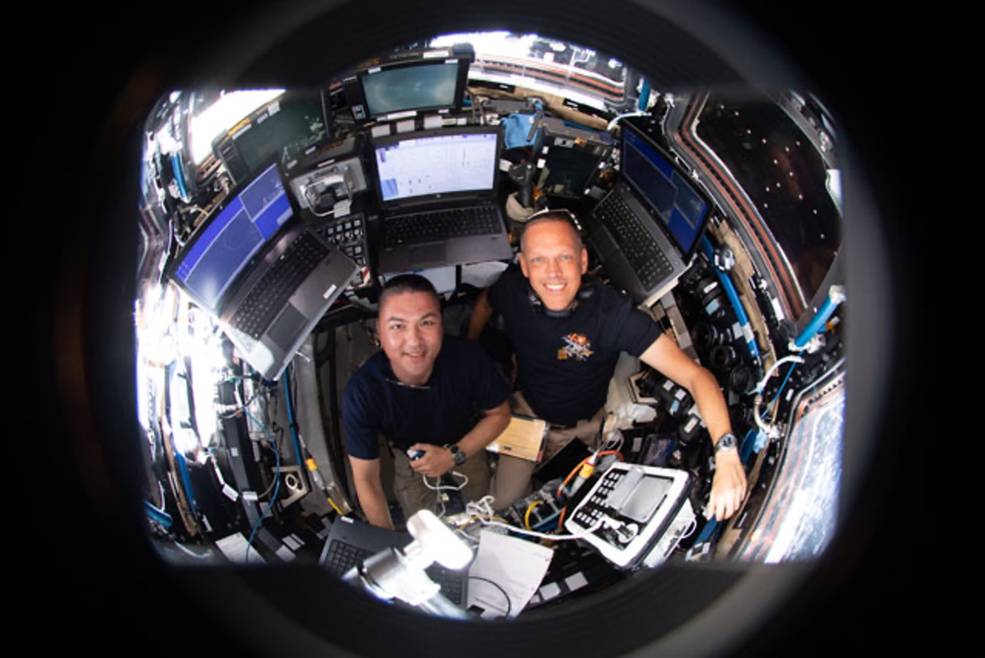
Houston area students will have an opportunity this week to hear from NASA astronauts aboard the International Space Station. The space-to-Earth call will air live from 11:10 a.m. to 11:30 a.m. EDT on Thursday, Sept. 22, on NASA Television, the NASA app, and the agency’s website.
NASA astronauts Bob Hines and Kjell Lindgren will answer prerecorded questions from students attending Sam Houston Math, Science, Technology Center High School. Questions will come from members of the ROTC, National Honor Society, and physics classes. The downlink will connect students’ coursework to life and work aboard the space station.
Media interested in covering the event should contact Dennis Spellman at: dennis.spellman@houstonisd.org or 713-556-6393.
For more than 21 years, astronauts have continuously lived and worked aboard the space station, testing technologies, performing science, and developing the skills needed to explore farther from Earth. Astronauts living in space aboard the orbiting laboratory communicate with NASA’s Mission Control Center in Houston 24 hours a day through the Near Space Network Tracking and Data Relay Satellites (TDRS).
As part of Artemis, NASA will send astronauts to the Moon, to prepare for future human exploration of Mars. Inspiring the next generation of explorers – the Artemis Generation – ensures America will continue to lead in space exploration and discovery.
See videos and lesson plans highlighting research on the International Space Station at:
NASA Announces Pending Departure of Science Associate Administrator
September 13th, 2022
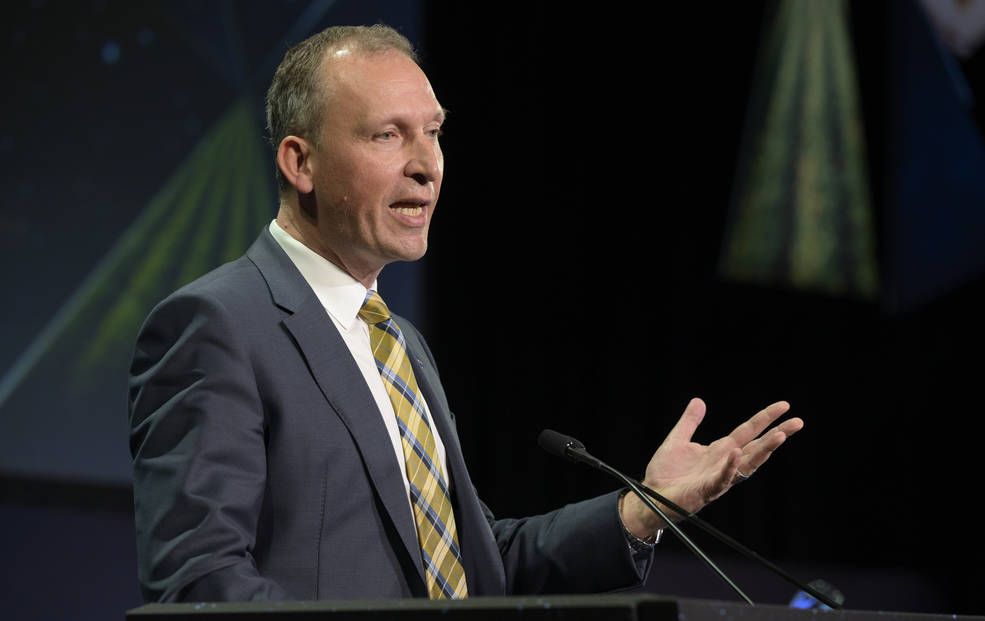
Dr. Thomas Zurbuchen, associate administrator of NASA’s Science Mission Directorate, will leave the agency at the end of 2022, after six years of dedicated service.
“NASA explores to better understand our place in the universe, and to use what we learn to support life on Earth. Thomas has made an indelible mark at NASA – indeed, he has held this job continuously longer than any other person – and I am thankful for his dedication to our agency,” said NASA Administrator Bill Nelson.
As the head of science, Zurbuchen oversees nearly 100 science missions. He helped select 36 new missions during his tenure, including Dragonfly, SPHEREx, and the Mars Sample Return mission. He has worked tirelessly to ensure NASA’s science missions build partnerships across disciplines and with industry and other nations to generate new questions and help advance the frontiers of knowledge and exploration.
Zurbuchen brought a wealth of scientific research, engineering experience, and hands-on knowledge to NASA’s world-class team of scientists and engineers. He led the mission directorate during some of the agency’s most inspirational moments, such as sending the first spacecraft to touch the Sun, launching and sharing the first images from the James Webb Space Telescope, and landing the Perseverance rover on Mars along with the first powered, controlled flight on another planet with the Ingenuity helicopter, to name a few.
He authored or co-authored more than 200 articles in peer reviewed journals in solar and heliospheric phenomena. He earned his doctorate and Master of Science degrees in physics from the University of Bern in Switzerland.
Zurbuchen’s many honors include multiple NASA achievement awards, induction as a member of the International Academy of Astronautics, 2020 Outstanding Leadership Medal, 2021 Presidential Rank Award, and 2022 Distinguished Service Medal.
NASA is conducting a nationwide search and open competition for a new associate administrator.
NASA to Discuss Status of Next Artemis I Moon Mission Launch Attempt
September 7th, 2022
NASA will hold a media teleconference at 11 a.m. EDT Thursday, Sept. 8, to discuss next steps for the Artemis I mission to launch the Space Launch System (SLS) rocket and Orion spacecraft from the agency’s Kennedy Space Center in Florida.
Audio of the call will livestream on NASA’s website at:
Artemis I is an uncrewed flight test. It is the first in a series of increasingly complex missions to provide a foundation for human exploration in deep space and demonstrate our commitment and capability to extend human existence to the Moon and beyond.
Teleconference participants include:
- Jim Free, associate administrator, Exploration Systems Development Mission Directorate, NASA Headquarters
- Mike Bolger, Exploration Ground Systems program manager, Kennedy
- John Blevins, SLS chief engineer, NASA’s Marshall Space Flight Center
To participate by telephone, media must RSVP no later than two hours prior to the start of the event to: ksc-newsroom@mail.nasa.gov.
After standing down on the Sept. 3 launch attempt due to a hydrogen leak, teams have decided to replace the seal on an interface, called the quick disconnect, between the liquid hydrogen fuel feed line on the mobile launcher and the rocket while at the launch pad.
Through Artemis missions, NASA will land the first woman and the first person of color on the Moon, paving the way for a long-term lunar presence and serving as a steppingstone to send astronauts to Mars.
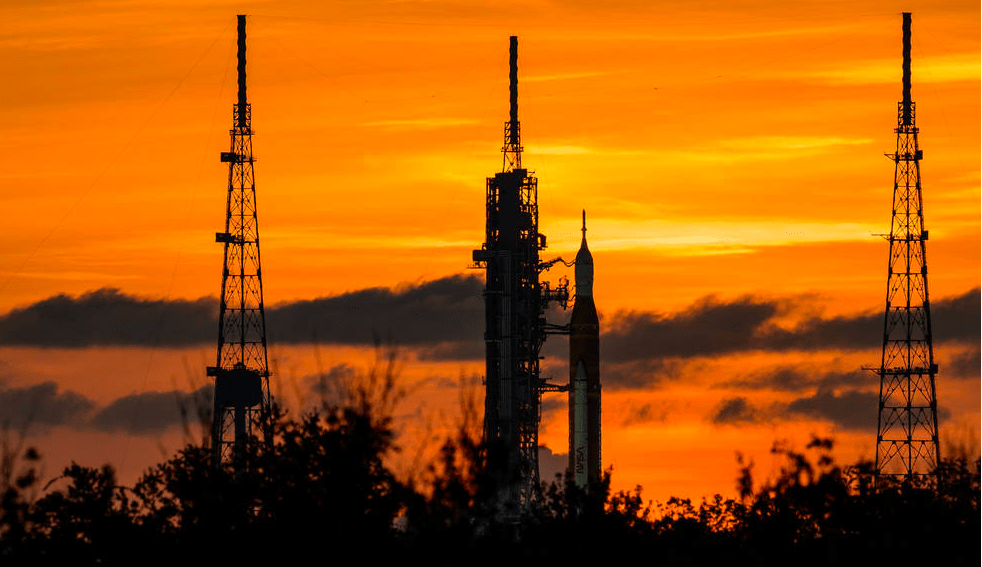
NASA to Provide Update on Artemis I Moon Mission Status
August 29th, 2022

NASA will hold a media teleconference at 6 p.m. EDT Tuesday, Aug. 30, to discuss the flight test of the agency’s mega Moon rocket and uncrewed Orion spacecraft, currently at Launch Pad 39B at NASA’s Kennedy Space Center in Florida, ahead of the Artemis I lunar mission.
Audio of the teleconference will stream live online at:
Teleconference participants include:
- Mike Sarafin, Artemis mission manager, NASA Headquarters
- Charlie Blackwell-Thompson, Artemis launch director, NASA Exploration Ground Systems Program, NASA Kennedy
- John Honeycutt, manager, Space Launch System (SLS) Program, NASA’s Marshall Space Flight Center
To participate by telephone, media must RSVP no later than two hours prior to the start of the event to: ksc-newsroom@mail.nasa.gov.
The Artemis I launch was scrubbed Monday after encountering an issue getting one of the four RS-25 engines on the bottom of the rocket’s core stage to the proper temperature range for liftoff.
Artemis I is a test flight to launch NASA’s Space Launch System rocket and an uncrewed Orion spacecraft around the Moon before the Artemis II mission, which will have astronauts aboard. Through Artemis missions, NASA will land the first woman and the first person of color on the Moon, paving the way for a long-term lunar presence and serving as a steppingstone on the way to Mars.
NASA Waves Off First Artemis I Launch Attempt, to Provide Media Update
August 29th, 2022
Following the Artemis I launch scrub Monday from Launch Complex 39B at NASA’s Kennedy Space Center in Florida, the agency will hold a media briefing at approximately 1 p.m. EDT today, Monday, Aug. 29, to discuss mission status.
The briefing will livestream on NASA Television, the agency’s app, and on the agency’s website.
Artemis I is a flight test to launch NASA’s Space Launch System rocket and an uncrewed Orion spacecraft around the Moon before the Artemis II mission with astronauts aboard.
The approximately two-day countdown for launch began Saturday, Aug. 27, and was waved off Monday after encountering an issue getting one of the four RS-25 engines on the bottom of the rocket’s core stage to the proper temperature range for liftoff.
NASA Administrator Bill Nelson provided brief remarks shortly after the scrub was announced. He also will join the upcoming news conference.
The following individuals also are confirmed to participate at this time:
- Jim Free, associate administrator for Exploration Systems Development Mission Directorate, NASA Headquarters
- Mike Sarafin, Artemis mission manager, NASA Headquarters
To participate by telephone, media must RSVP by the start of the call to: ksc-newsroom@mail.nasa.gov.
Through Artemis missions, NASA will land the first woman and the first person of color on the Moon, paving the way for a long-term lunar presence and serving as a steppingstone to send astronauts to Mars.

Colorado, Indiana Students to Hear from NASA Astronaut in Space
August 25th, 2022
Students from Colorado and Indiana will have the opportunity next week to hear from NASA astronaut Kjell Lindgren aboard the International Space Station. The two space-to-Earth calls will air live, Tuesday, Aug. 30, and Wednesday, Aug. 31, on NASA Television, the NASA app, and the agency’s website.
Lindgren will answer prerecorded questions from students at the Children’s Museum of Indianapolis at 10:10 a.m. EDT, Tuesday, Aug. 30. The Children’s Museum of Indianapolis hosts immersive exhibits in the arts, sciences, and humanities, including a replica of the International Space Station in the Beyond Spaceship Earth exhibit, which students can visit during the downlink experience. Media interested in covering the event should contact: Kim Harms at: kimh@childrensmuseum.org or 317-334-4003.
Lindgren attended the U.S. Air Force Academy in Colorado Springs, earned a master’s degree from Colorado State University in Fort Collins, and received a doctorate from the University of Colorado in Denver. The astronaut will answer prerecorded questions from students across Colorado at 1:10 p.m. EDT Wednesday, Aug. 31. The call will be part of Denver Museum of Nature & Science’s Scientists in Action broadcast series that engages students by connecting them with working scientists in the field. It will reach school districts, homeschool learning pods, senior community groups, and youth-serving community organizations across Colorado. Media interested in covering the event should contact Maua O’Neal at: maura.oneal@dmns.org or 303-370-6407.
For more than 21 years, astronauts have continuously lived and worked aboard the space station, testing technologies, performing science, and developing the skills needed to explore farther from Earth. Astronauts living in space on the orbiting laboratory communicate with NASA’s Mission Control Center in Houston 24 hours a day through the Near Space Network Tracking and Data Relay Satellites (TDRS).
As part of Artemis, NASA will send astronauts to the Moon, to prepare for future human exploration of Mars. Inspiring the next generation of explorers – the Artemis Generation – ensures America will continue to lead in space exploration and discovery.
NASA Identifies Candidate Regions for Landing Next Americans on Moon
August 19th, 2022

As NASA prepares to send astronauts back to the Moon under Artemis, the agency has identified 13 candidate landing regions near the lunar South Pole. Each region contains multiple potential landing sites for Artemis III, which will be the first of the Artemis missions to bring crew to the lunar surface, including the first woman to set foot on the Moon.
“Selecting these regions means we are one giant leap closer to returning humans to the Moon for the first time since Apollo,” said Mark Kirasich, deputy associate administrator for the Artemis Campaign Development Division at NASA Headquarters in Washington. “When we do, it will be unlike any mission that’s come before as astronauts venture into dark areas previously unexplored by humans and lay the groundwork for future long-term stays.”
NASA identified the following candidate regions for an Artemis III lunar landing:
- Faustini Rim A
- Peak Near Shackleton
- Connecting Ridge
- Connecting Ridge Extension
- de Gerlache Rim 1
- de Gerlache Rim 2
- de Gerlache-Kocher Massif
- Haworth
- Malapert Massif
- Leibnitz Beta Plateau
- Nobile Rim 1
- Nobile Rim 2
- Amundsen Rim
Each of these regions is located within six degrees of latitude of the lunar South Pole and, collectively, contain diverse geologic features. Together, the regions provide landing options for all potential Artemis III launch opportunities. Specific landing sites are tightly coupled to the timing of the launch window, so multiple regions ensure flexibility to launch throughout the year.
To select the regions, an agencywide team of scientists and engineers assessed the area near the lunar South Pole using data from NASA’s Lunar Reconnaissance Orbiter and decades of publications and lunar science findings. In addition to considering launch window availability, the team evaluated regions based on their ability to accommodate a safe landing, using criteria including terrain slope, ease of communications with Earth, and lighting conditions. To determine accessibility, the team also considered combined capabilities of the Space Launch System rocket, the Orion spacecraft, and the SpaceX-provided Starship human landing system.
NASA Seeks Student Experiments to Soar in Second TechRise Challenge
August 10th, 2022

NASA is calling on middle and high school students to join the second NASA TechRise Student Challenge, which invites student teams to develop, build, and launch science and technology experiments on high-altitude balloons.
Students in grades six to 12 attending U.S. public, private, or charter schools – including those in U.S. territories – are challenged to team up with their schoolmates to design an experiment under the guidance of an educator. Administered by Future Engineers, the NASA TechRise Student Challenge offers hands-on insight into the design and test process used by NASA-supported researchers. It aims to inspire a deeper understanding of Earth’s atmosphere, surface features, and climate, as well as space exploration, coding, electronics, and the value of test data. Teams should submit their experiment ideas by Oct. 24, 2022.
“We are thrilled to offer the second NASA TechRise Student Challenge,” said NASA Administrator Bill Nelson. “The quality of the experiments and the creativity we saw from students in the last challenge are exactly the kinds of problem-solving and hands-on learning NASA hopes to inspire. We’re eager to see what innovative ideas pour in from students around the nation this year.”
California, Indiana Students to Hear from Astronauts on Space Station
August 9th, 2022
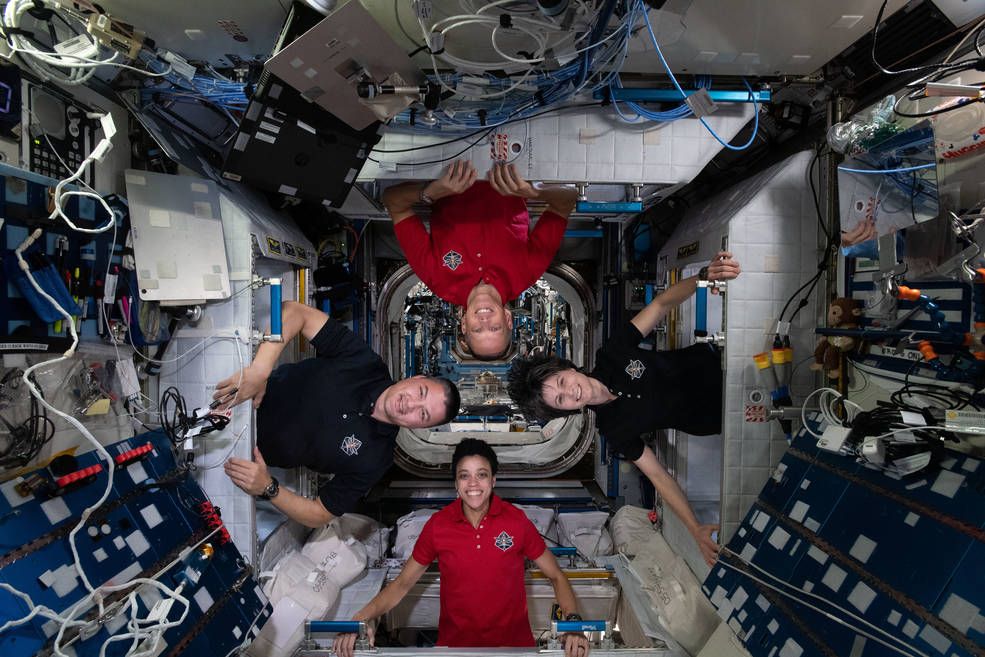
Students from California and Indiana, along with staff members at NASA’s Jet Propulsion Laboratory (JPL) in Southern California, will have the opportunity this week to hear from astronauts aboard the International Space Station. The two space-to-Earth calls will air live today, Tuesday, Aug. 9, and Thursday, Aug. 11, on NASA Television, the NASA app, and the agency’s website.
NASA astronaut and former California Institute of Technology student Jessica Watkins will answer prerecorded questions from undergraduate and post-doctoral students and faculty from Caltech, as well as JPL staff members, at 12:55 p.m. EDT today, Tuesday, Aug. 9. Caltech and JPL have a keen interest and dedication to encouraging STEM learning. Laurie Leshin, director of JPL and Caltech vice president, will deliver opening and closing remarks.
Media interested in covering the event should contact Deborah Williams-Hedges at: debwms@caltech.edu or 626-840-1565.
NASA astronaut Kjell Lindgren and ESA (European Space Agency) astronaut Samantha Cristoforetti will answer prerecorded questions from students at Van Buren Elementary School in Nashville, Indiana, at 1:05 p.m. Thursday, Aug. 11. Van Buren Elementary offers students educational experiences in STEM, the arts, and career-connected learning. The downlink will kick off a school-wide STEM-a-Thon. Indiana Governor Eric Holcomb will deliver opening remarks.
Media interested in covering the event should contact: Sarah Cochran at: 407-625-3562 or scochran@browncountyschools.com.
Linking students directly to astronauts aboard the space station provides unique, authentic experiences designed to enhance student learning, performance, and interest in science, technology, engineering, and mathematics. Astronauts living in space on the orbiting laboratory communicate with NASA’s Mission Control Center in Houston 24 hours a day through the Near Space Network Tracking and Data Relay Satellites (TDRS).
For more than 21 years, astronauts have continuously lived and worked aboard the space station, testing technologies, performing science, and developing the skills needed to explore farther from Earth. Through NASA’s Artemis program, the agency will send astronauts to the Moon, with eventual human exploration of Mars. Inspiring the next generation of explorers – the Artemis Generation – ensures America will continue to lead in space exploration and discovery.
SOAR High School Student Wins NASA Armstrong Scholarship
July 28th, 2022
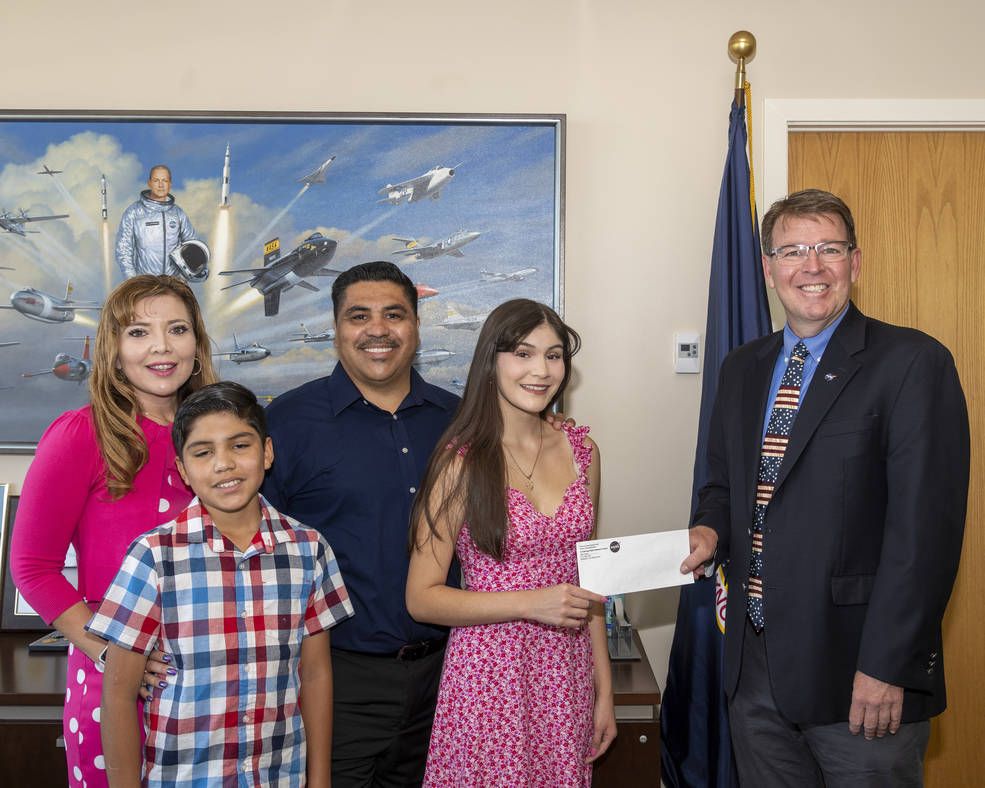
The NASA Armstrong Employee Exchange Council presented the 2022 John W. Russell Memorial Scholarship Award to Katelyn Perez.
Perez is a 2022 graduate of Students on Academic Rise (SOAR) High School in Lancaster, California, who plans to major this fall in English at the University of California, Irvine. She earned a 4.57 grade-point average and ranked 36 academically at her high school out of a class of 114 students.
The scholarship provides $2,000 per year for up to four years for attendance at a four-year college or university, provided the recipient maintains a minimum grade-point average of 3.0 or higher. Applicants for the annual scholarship must be high school seniors with a parent working at NASA Armstrong.
Perez was surprised when she learned of her selection.
“I could not believe it,” Perez said. “This is the first scholarship I have won and I’m excited!”
She is the daughter of Carlos and Annamarie Perez of Lancaster, California. Carlos Perez is the NASA Armstrong X-59 lead quality assurance specialist.
“It was great news for our family,” her father said.
Katelyn Perez wants to be a community college or university English professor, share her love for literature, and inspire students. She credits her work ethic to her parents and her love of literature and enthusiasm for teaching to her mother, who is an English professor at Antelope Valley College.
“My mom raised three kids and sometimes worked two jobs,” Perez said. “I was inspired. I had some great teachers and my mother’s example of what I want to do. Any great teacher wants to inspire, and I want to be like them and do that.”
Annamarie Perez is proud of her daughter, who she taught in sophomore year of high school, and supports her career choice.
“Katelyn will help future generations to get ahead and succeed in college,” she said. “Education is the best tool to change the world because it opens doors and provides access to opportunities.”
To prepare for her future, Perez completed the Antelope Valley College Honors Program while attending high school. She excelled in advanced placement and honors classes, earned the California State Seal of Biliteracy, received the National Honor Society Medal, and graduated as a member of the California Scholarship Federation.
At SOAR, she was vice president of the Christian club, and was treasurer for the National Honors Society, the California Scholarship Federation, and for the school’s journalism program. She published articles in the school’s monthly newspaper, and was lead anchor on the school’s news broadcasts, both called the SOARce. Perez participated in student government, mentored new students, was a member of the Hispanic and LatinX Heritage Club, the Key Club, a tutor, and active in her church.
NASA Armstrong Exchange Council scholarships are named for five former Armstrong employees, with honorees selected on a rotating basis. Russell, who is named on the current scholarship, was the original crew chief for Chuck Yeager on the X-1 program that resulted in achieving speeds above Mach 1. Russell later flew as one of the panel operators when the X-15 rocket plane launched from the NASA B-52 and reached the edge of space.
In addition to Russell, the other four people are Thomas Finch, a center engineer who specialized in stability and control; Joseph Vensel, a former director of Flight Operations; Harold Walker, a former chief of the Aerodynamics Branch; and Joseph Walker, a chief test pilot. Scholarship funds are raised from council activities.
Decade of Excellence: NASA Named Best Place to Work 10th Year in a Row
July 13th, 2022
For the 10th consecutive year, the Partnership for Public Service has ranked NASA the Best Place to Work in the Federal Government among large agencies.
The rankings, announced Wednesday, reflect the agency’s continuing dedication to supporting and strengthening its workforce while also carrying out its inspirational mission of exploration and discovery for the benefit of all humanity.
“For an unprecedented 10th consecutive time, NASA has been named as the Best Place to Work in the federal government among large agencies by the Partnership for Public Service. This is only possible because of the NASA family, which empowers our agency to continue achieving monumental milestones that shape history and benefit all of humanity. I am deeply proud to be a part of and represent such a creative and talented workforce,” said NASA Administrator Bill Nelson. “Despite a global pandemic, we came together to make 2021 a banner year for space exploration and discovery – from the successful launch of the James Webb Space Telescope to launching astronauts to the International Space Station from American soil. And we are poised to accomplish more daring feats with new advancements in aeronautics, more scientific contributions, and incredible technological breakthroughs, especially as our Artemis I mission paves the way for future crewed missions to the Moon and beyond.”
The Best Places to Work in the federal government rankings are based on responses to the Office of Personnel Management’s annual Federal Employee Viewpoint Survey from almost 624,800 employees at 482 federal agencies and offices. The Partnership for Public Service began publishing the rankings in 2003.
NASA Reveals Webb Telescope’s First Images of Unseen Universe
July 12th, 2022
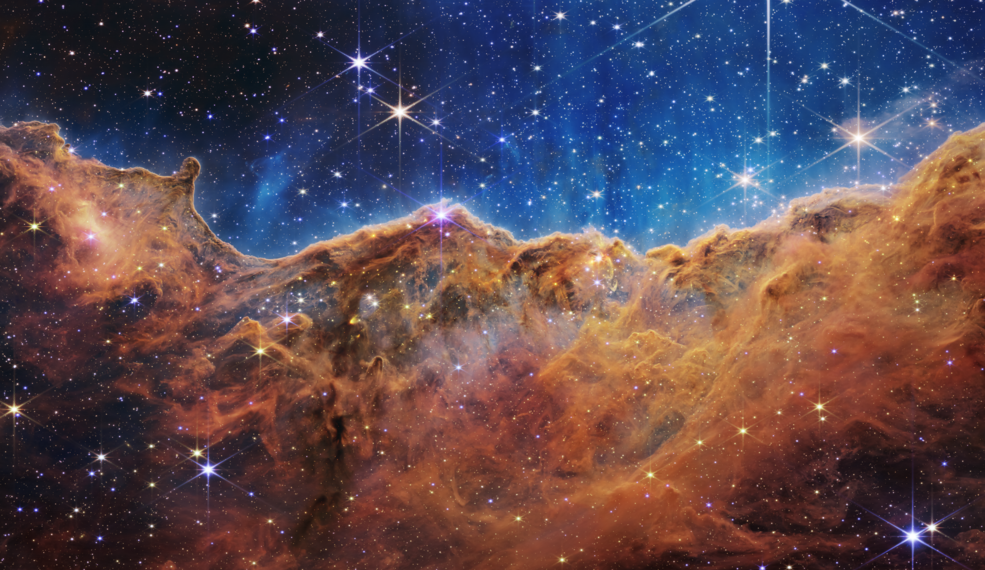
The dawn of a new era in astronomy is here as the world gets its first look at the full capabilities of NASA’s James Webb Space Telescope, a partnership with ESA (European Space Agency) and CSA (Canadian Space Agency).
The full set of the telescope’s first full-color images and spectroscopic data, which uncover a collection of cosmic features elusive until now, released Tuesday, are available at:
https://www.nasa.gov/webbfirstimages
“Today, we present humanity with a groundbreaking new view of the cosmos from the James Webb Space Telescope – a view the world has never seen before,” said NASA Administrator Bill Nelson. “These images, including the deepest infrared view of our universe that has ever been taken, show us how Webb will help to uncover the answers to questions we don’t even yet know to ask; questions that will help us better understand our universe and humanity’s place within it.
“The Webb team’s incredible success is a reflection of what NASA does best. We take dreams and turn them into reality for the benefit of humanity. I can’t wait to see the discoveries that we uncover – the team is just getting started!”
NASA explores the unknown in space for the benefit of all, and Webb’s first observations tell the story of the hidden universe through every phase of cosmic history – from neighboring planets outside our solar system, known as exoplanets, to the most distant observable galaxies in the early universe.
“This is a singular and historic moment,” said Thomas Zurbuchen, associate administrator for NASA’s Science Mission Directorate. “It took decades of drive and perseverance to get us here, and I am immensely proud of the Webb team. These first images show us how much we can accomplish when we come together behind a shared goal, to solve the cosmic mysteries that connect us all. It’s a stunning glimpse of the insights yet to come.”
“We are elated to celebrate this extraordinary day with the world,” said Greg Robinson, Webb program director at NASA Headquarters. “The beautiful diversity and incredible detail of the Webb telescope’s images and data will have a profound impact on our understanding of the universe and inspire us to dream big."
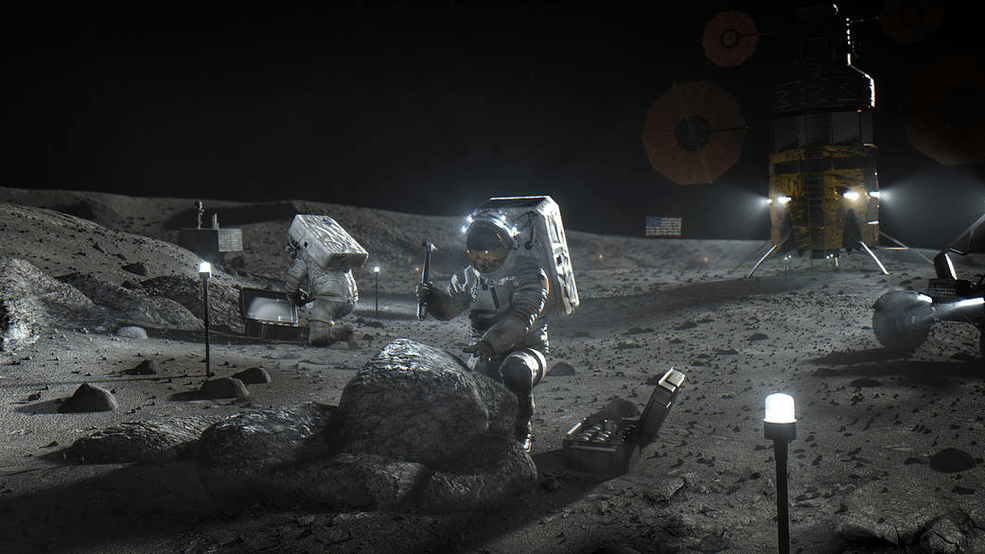
NASA Breaking News
Are We Alone?
In 2020 NASA's next Mars rover mission will be underway and the rover will be flying to the Red Planet searching for possible post existent life.
At a glance, it looks a lot like its predecessor, the Curiosity Mars rover. But there's no doubt it's a souped-up science machine: It has seven new instruments, redesigned wheels and more autonomy. A drill will capture rock cores, while a caching system with a miniature robotic arm will seal up these samples. Then, they'll be deposited on the Martian surface for possible pickup by a future mission.
This new hardware is being developed at NASA's Jet Propulsion Laboratory, Pasadena, California, which manages the mission for the agency. It includes the Mars 2020 mission's cruise stage, which will fly the rover through space, and the descent stage, a rocket-powered "sky crane" that will lower it to the planet's surface. Both of these stages have recently moved into JPL's Spacecraft Assembly Facility.


Are We Alone?
Mars 2020 relies heavily on the system designs and spare hardware previously created for Mars Science Laboratory's Curiosity rover, which landed in 2012. Roughly 85 percent of the new rover's mass is based on this "heritage hardware."
"The fact that so much of the hardware has already been designed -- or even already exists -- is a major advantage for this mission," said Jim Watzin, director of NASA's Mars Exploration Program. "It saves us money, time and most of all, reduces risk."
Despite its similarities to Mars Science Laboratory, the new mission has very different goals. Mars 2020's instruments will seek signs of ancient life by studying terrain that is now inhospitable, but once held flowing rivers and lakes, more than 3.5 billion years ago.
To achieve these new goals, the rover has a suite of cutting-edge science instruments. It will seek out biosignatures on a microbial scale: An X-ray spectrometer will target spots as small as a grain of table salt, while an ultraviolet laser will detect the "glow" from excited rings of carbon atoms. A ground-penetrating radar will be the first instrument to look under the surface of Mars, mapping layers of rock, water and ice up to 30 feet (10 meters) deep, depending on the material
The rover is getting some upgraded Curiosity hardware, including color cameras, a zoom lens and a laser that can vaporize rocks and soil to analyze their chemistry.
"Our next instruments will build on the success of MSL, which was a proving ground for new technology," said George Tahu, NASA's Mars 2020 program executive. "These will gather science data in ways that weren't possible before."
The mission will also undertake a marathon sample hunt: The rover team will try to drill at least 20 rock cores, and possibly as many as 30 or 40, for possible future return to Earth.
"Whether life ever existed beyond Earth is one of the grand questions humans seek to answer," said Ken Farley of JPL, Mars 2020's project scientist. "What we learn from the samples collected during this mission has the potential to address whether we're alone in the universe."
JPL is also developing a crucial new landing technology called terrain-relative navigation. As the descent stage approaches the Martian surface, it will use computer vision to compare the landscape with pre-loaded terrain maps. This technology will guide the descent stage to safe landing sites, correcting its course along the way.
A related technology called the range trigger will use location and velocity to determine when to fire the spacecraft's parachute. That change will narrow the landing ellipse by more than 50 percent.
"Terrain-relative navigation enables us to go to sites that were ruled too risky for Curiosity to explore," said Al Chen of JPL, the Mars 2020 entry, descent and landing lead. "The range trigger lets us land closer to areas of scientific interest, shaving miles -- potentially as much as a year -- off a rover's journey."
This approach to minimizing landing errors will be critical in guiding any future mission dedicated to retrieving the Mars 2020 samples, Chen said.
Site selection has been another milestone for the mission. In February, the science community narrowed the list of potential landing sites from eight to three. Those three remaining sites represent fundamentally different environments that could have harbored primitive life: an ancient lakebed called Jezero Crater; Northeast Syrtis, where warm waters may have chemically interacted with subsurface rocks; and a possible hot springs at Columbia Hills.
All three sites have rich geology and may potentially harbor signs of past microbial life. A final landing site decision is still more than a year away.
"In the coming years, the 2020 science team will be weighing the advantages and disadvantages of each of these sites," Farley said. "It is by far the most important decision we have ahead of us."
